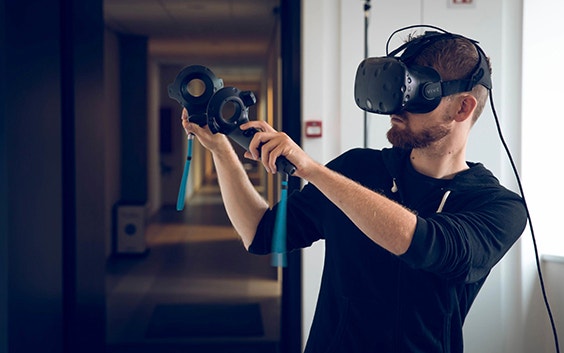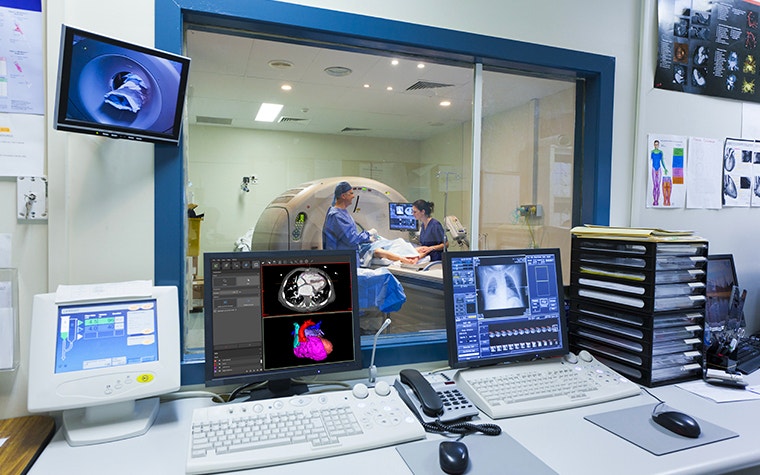TRENDS
2022 Trends in Point-of-Care 3D Printing

As the COVID-19 pandemic continues its impact on our daily lives, we observe an upward trend in the adoption of 3D technologies in healthcare. Today, nearly 450 hospitals around the world have on-site, point-of-care 3D printing labs supported by Materialise that provide more efficient, personalized care for their patients, including 85 percent of the top 20 hospitals in the United States.
The medical community continues to see the value of 3D printing for personalized treatment, and manufacturers are eager to invest in making 3D technologies more performant, more accessible, and easier to use. One example is the increasing adoption of the 3MF file format that enables realistic color models and more.
In this article, we’ll look at the trends that will impact 3D printing at the point of care in 2022.
Quality and the regulatory framework become even more important
With new regulations in the EU setting quality control requirements for medical 3D printing, hospitals are increasingly emphasizing quality management to ensure point-of-care 3D printing labs are monitored and assessed for the best possible patient experience and care. To get a quick overview of the MDR requirements for 3D printing at the point of care, take a look here.
In the United States, the FDA published a discussion paper in December 2021 that provides background information on 3D printing and proposes potential point-of-care manufacturing scenarios to get feedback from stakeholders for future guidance and regulation. You can see the feedback that Materialise shared here. Some main challenges presented include ensuring that devices 3D printed at the point of care are safe and effective. This makes it clear that quality assurance is also essential in the United States and that the need for quality management systems is increasing.


With 30+ years of experience in medical 3D printing, Materialise has worked with hospitals at every stage of point-of-care printing — from those just setting up their first lab to hospitals with well-established 3D printing processes — to help them effectively manage their labs and ensure high-quality printing for patient communication, diagnostics, and treatment. Today, Materialise supports hospitals as they adopt and refine their point-of-care 3D printing solutions via:
- A certification program to identify compatible 3D printers and materials for diagnostic use in cardiovascular, cranio-maxillofacial, and orthopaedic patients
- A training program to help hospitals build quality management systems that optimize patient care and future-proof their on-site 3D printing operations
Thinking beyond anatomical models
Patient-specific anatomical models for very complex clinical cases were the beginning of point-of-care 3D printing more than 20 years ago. Since then, many scientific articles have shown the benefits of using anatomical models for different pathologies, as well as instances where they are not used exclusively for rare cases but still offer clear benefits.


Additionally, 3D virtual planning and other uses of 3D printing offer further opportunities and will accelerate this trend during 2022. The design and printing of surgical guides for CMF and orthopaedic clinical applications are becoming more common, particularly in Europe.
Artificial intelligence
One of the biggest challenges in hospitals that want to implement 3D printing is the lack of time and human resources. Artificial intelligence promises to ease these challenges.
Medical imaging analysis technology that is based on AI and properly regulated to ensure quality and patient safety will make it easier for hospitals to add 3D printing to their current workflows.
Materialise is at the front of this technology with:
- Medically cleared, AI-enabled automatic segmentation tools for the heart, skull, and knee
- An AI-enabling tool that allows institutions to streamline their processes and create AI models with a bigger impact
Education on point-of-care 3D printing
Specific education for 3D printing at the point of care has been an unmet need for the last 20 years. Some pioneering programs, such as the one from Clarkson University, paved the way to help close the gap between working with 3D printing in medicine and traditional academic methods. In 2022, we will see several new programs aimed at educating the next generation of leaders in this field.
Materialise has its own certification, the Mimics User Certification Program. In this online training course, Materialise experts teach users how to master Materialise Mimics. Staff from Queen Elizabeth Hospital Birmingham, for example, attended the course in order to build foundational standard processes and accreditation that are crucial to meet the requirements of ISO 13485 within their QMS.
Mixed reality
This year, using mixed reality to complement 3D printing applications will continue to gain momentum. As hardware capabilities advance further and specialized software applications become more widely available, the potential of these technologies multiplies. Additionally, the increasing affordability of devices consequently increases accessibility, meaning we’ll see a boost in adoption, not only for training purposes and visualizing clinical cases but also to support the rapid prototyping of devices and possibly even aid surgeons in the operating room.
Another impact brought on by the immersive nature of advanced visualization is the enhancement of communication and collaboration. For example, using virtual reality on Materialise software in tandem with 3D printing provides a quick, affordable solution for remote planning.
We look forward to seeing all that 2022 brings to personalized care. At Materialise, we’re working hard to continue enhancing our technologies that make the world a better and healthier place.
L-102508-01
Share on:
You might also like
Never miss a story like this. Get curated content delivered straight to your inbox.
